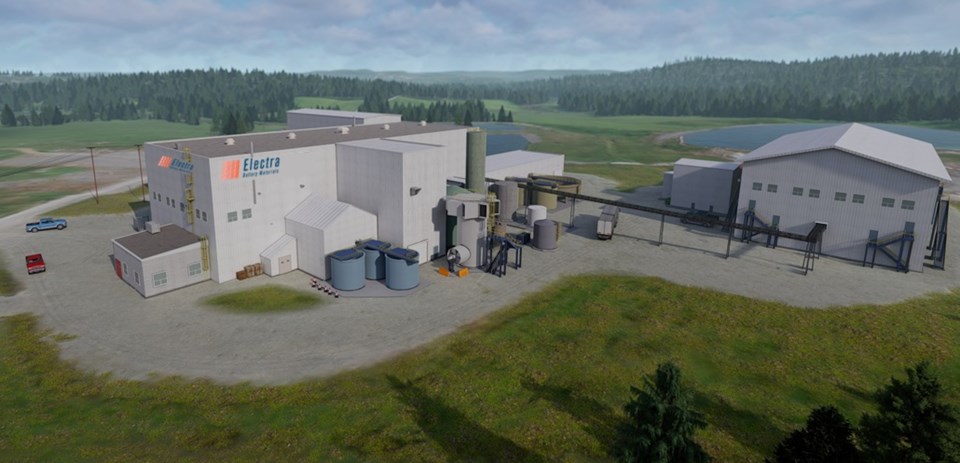A little more than a year after asserting that Ontario should be a world leader in the emerging net-zero economy, the provincial government released its five-year road map with its much-touted Critical Mineral Strategy.
Premier Doug Ford delivered the news on March 17 at Impala's Lac des Iles palladium mine, northwest of Thunder Bay.
He called the 50-some page document his government's "blueprint to connect industries, resources and workers in our province’s north to the future of manufacturing in the south as we build up home-grown supply chains."
The provincial government wants Ontario to be on the global forefront in building electric vehicles by arranging a domestic supply chain that starts at the mineral exploration and extraction stage and continues downstream through the high-tech advanced manufacturing processes to the car assembly plants.
“Doing so has never been more important as we secure game-changing investments in our auto sector to build the electric vehicles and batteries of the future using Ontario minerals," said Ford.
Critical minerals include chromite, graphite, nickel, cobalt, platinum group elements and others used in electric vehicle industry, and in various defence, aerospace, digital, electronics, stainless steel, energy, health and life sciences applications.
The government's strategy contains six priorities:
• Enhancing geoscience information and supporting critical minerals exploration
• Growing domestic processing and creating resilient local supply chains
• Improving the regulatory framework to make the mining industry more globally
competitive
• Investing in innovation, research and development
• Building economic development opportunities with Indigenous partners
• Growing labour supply and developing a skilled labour force
With the strategy document comes some significant funding.
To assist prospectors and junior mining companies find new deposits in Ontario, the highly successful Junior Exploration Program is being suffused with $24 million spread out over three years. In this funding is $12 million for what the province is calling a critical minerals funding stream.
Administered by the Thunder Bay-based Ontario Prospectors Association (OPA), the program was first launched as a pilot in 2015. Since then it has helped dozens of junior miners with early exploration capital that could lead to the development of mines.
OPA Executive Director Garry Clark called it "welcome news to the explorers of the province" in assisting to target much-needed minerals.
The poster boys of this program is Vancouver's Great Bear Resourcess, the discoverers of the Dixie Gold Project in the Red Lake mining district. Great Bear used $100,000 in funding to jumpstart a drill program that eventually springboarded them to a second phase of exploration that produced a high-grade discovery hole in the northwestern Ontario mining camp. The Dixie Project was recently scooped by Kinross, a major gold mining company.
Five million dollars is also being allocated by the province for a new critical minerals innovation fund to support research for extraction and processing in Northern Ontario.
U.S. President Joe Biden is taking a hard-line "Made-in-America" manufacturing stand in his drive to secure secure domestic supply chains for critical minerals in forming the foundation for the electric-vehicle revolution. It'll be up to Queen's Park to get their message through to the White House to be part of his strategy.
“Our government is building an advanced manufacturing supply chain that will create economic opportunities for Ontarians across the province, including Indigenous communities," said Northern Development, Mines, Natural Resources and Forestry Minister Greg Rickford in the news release. "We want the world to know that Ontario is ready to supply our allies with a reliable source of critical minerals.”
The federal and provincial governments have already jumped on the critical minerals bandwagon by making a sizeable investments in supporting the restoration of a Temiskaming refinery, run by Electra Battery Materials, to create a battery materials industrial park in northeastern Ontario. It'll be the first of its kind in North America.
Trent Mell, Electra's president-CEO, congratulated the government on releasing the strategy.
"With the rapid transition of North America’s automotive sector towards electric vehicles coupled with growing consumer demand for zero emission vehicles, now is the right time for the province to capitalize on its abundant critical minerals and proximity to markets," Mell said in a statement.




